Discover how to configure Oracle Forms and Reports 12c on CentOS 7 with this detailed guide. Follow step-by-step instructions for a seamless setup experience. #centlinux #linux #oracle
Table of Contents
What is Oracle Forms and Reports 12c?
Oracle Forms and Reports 12c is a component of the Oracle Fusion Middleware, a comprehensive suite of tools and technologies for building, deploying, and managing enterprise applications. Oracle Forms and Reports provides a development and deployment framework for creating database-driven applications with a focus on building user interfaces and generating reports.
Oracle Forms and Reports 12c is a set of software tools used for developing, deploying, and managing enterprise applications and reports. Here’s a breakdown of each component:
Oracle Forms 12c
Oracle Forms is a platform for building enterprise applications quickly and efficiently. It allows developers to create data entry forms that interact with Oracle databases. Key features include:
- Rapid Application Development: Simplifies the creation of complex applications.
- Data Validation: Provides built-in capabilities for validating user input.
- Integration: Can be integrated with other Oracle technologies and web services.
- Scalability: Supports large-scale applications and multiple users.
- Web Deployment: Forms applications can be deployed as web-based applications.
Oracle Reports 12c
Oracle Reports is a tool for designing and generating reports from a variety of data sources. Key features include:
- Report Creation: Users can create a wide range of report types, from simple listings to complex, multi-section reports.
- Data Source Connectivity: Can connect to multiple data sources including Oracle databases, XML, and other data formats.
- Formatting and Layout: Provides extensive formatting options for designing professional-looking reports.
- Scheduling and Distribution: Supports scheduling of report generation and distribution via email or web.
- Integration: Can be integrated with Oracle Forms and other Oracle applications.
Overall Benefits
- Comprehensive Solution: Together, Oracle Forms and Reports offer a complete solution for building and deploying applications that require both data entry forms and reporting capabilities.
- Enterprise Grade: Designed for robustness, scalability, and performance, suitable for large organizations.
- Ease of Use: Provides tools and wizards to simplify the development process.
Use Cases
- Enterprise Resource Planning (ERP): Developing applications for finance, human resources, and supply chain management.
- Customer Relationship Management (CRM): Building applications to manage customer data and interactions.
- Custom Business Applications: Creating tailored solutions for specific business needs.
Overall, Oracle Forms and Reports 12c is a powerful platform for organizations looking to develop and maintain sophisticated data-driven applications and reports.
The “12c” in Oracle Forms and Reports 12c refers to the version number, and it indicates that it is part of the Oracle Cloud architecture. The “c” stands for “cloud,” highlighting Oracle’s focus on cloud-based solutions and services.
Overall, Oracle Forms and Reports 12c is used by organizations to develop and deploy database-centric applications and reports, providing a robust and scalable solution for managing enterprise data.
Recommended Online Training: Weblogic 12c Middleware Fundamentals

Linux Server Specification
In this article, we will create a Repository for Oracle Forms and Reports 12c in a Remote Oracle Database. Then, we will use Configuration Wizard to perform necessary configurations.
We are using the same Linux server that we have used in Install Oracle Forms and Reports 12c on CentOS 7.
- CPU – 2.4 Ghz (4 cores)
- Memory – 4 GB
- Storage – 60 GB
- Operating System – CentOS 7.6
- Java Development Kit (JDK) – 8u192
- Oracle Weblogic Infrastructure – 12.2.1.3
- Oracle Forms and Reports – 12.2.1.3
Create Database Schemas with RCU
Connect with appserver-04.example.com using ssh as oracle user.
Run Repository Configuration Utility (RCU) as follows:
$ $MW_HOME/oracle_common/bin/rcu
RCU Logfile: /tmp/RCU2018-12-31_14-23_1336016982/logs/rcu.log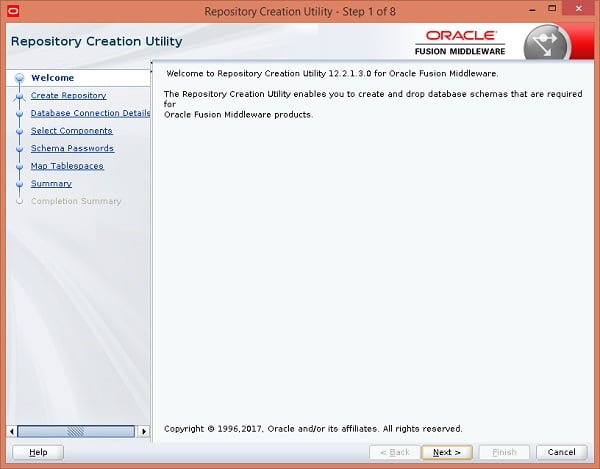
Click on Next.
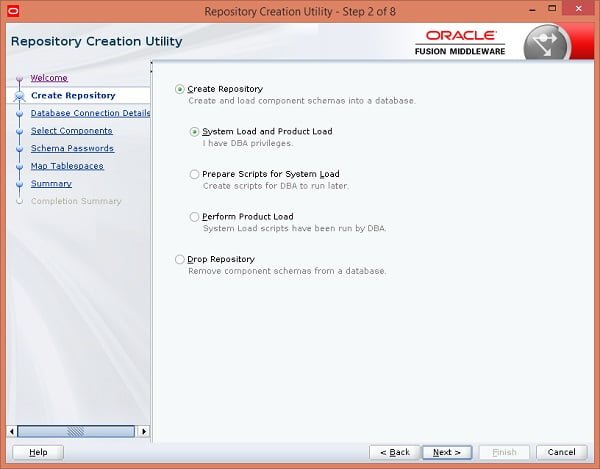
Select Create Repository option. Since, we have DBA privileges on our Repository database, therefore, we selected System Load and Product Load option.
Click on Next.

Provide database connection details here and click on Next.

RCU performs prerequisite checks. Click on OK when done.

Select required components to create their respective schemas and click on Next.

RCU perform prerequisite checks for the required components. Click on OK.

Define password for the Repository schemas here and click on Next.

Define Tablespace mappings and click on Next.

Click on OK.

RCU is creating tablespaces. Click on OK when done.
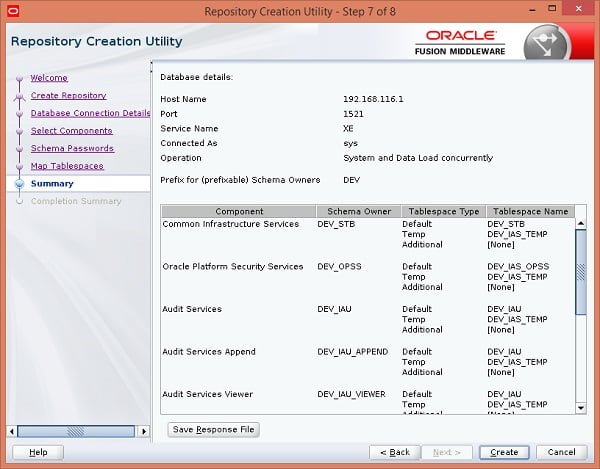
Review the summary of the configurations and click on Create.

Repository creation is in progress.
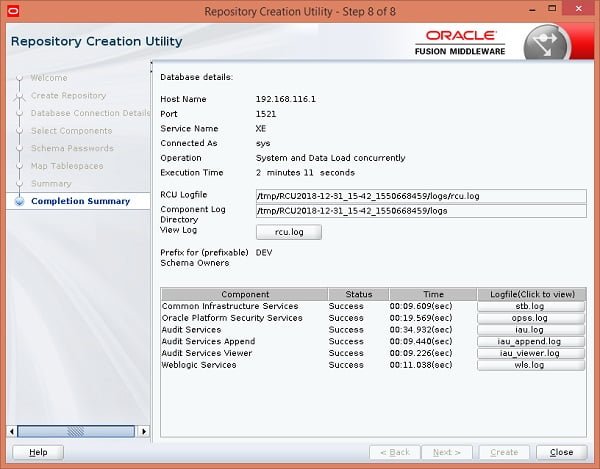
Check the completion summary and installation log.
Click on Close.
RCU has successfully created the Repository.
Configure Oracle Forms and Reports 12c
Connect with appserver-04.example.com using ssh as oracle user.
Run Configuration Wizard as follows:
$ $MW_HOME/oracle_common/common/bin/config.sh


Select Create a new domain and provide Domain location.
Click on Next.

Select the required product templates and click on Next.
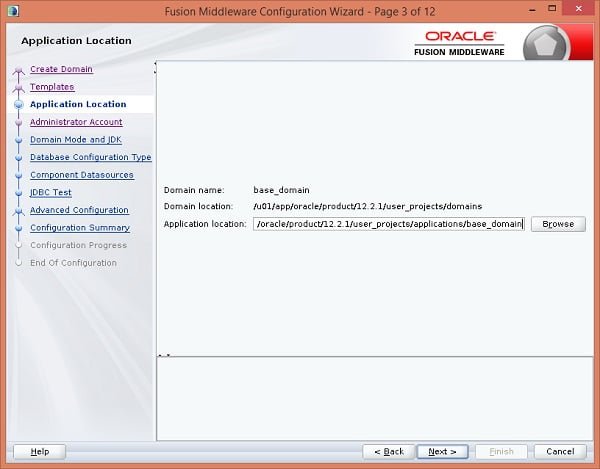
Provide application location and click on Next.
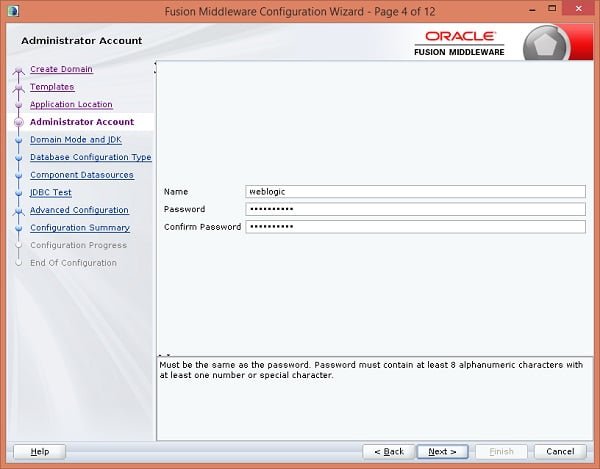
Define an Administrator user here. Click on Next.

Select Production domain mode and a certified JDK. Click on Next.
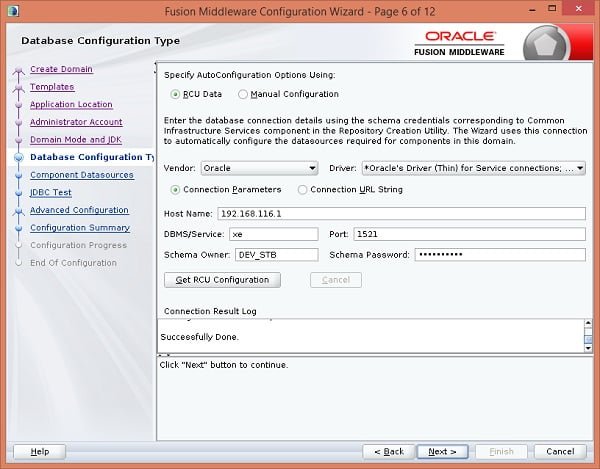
Provide database connection details here and click on Next.
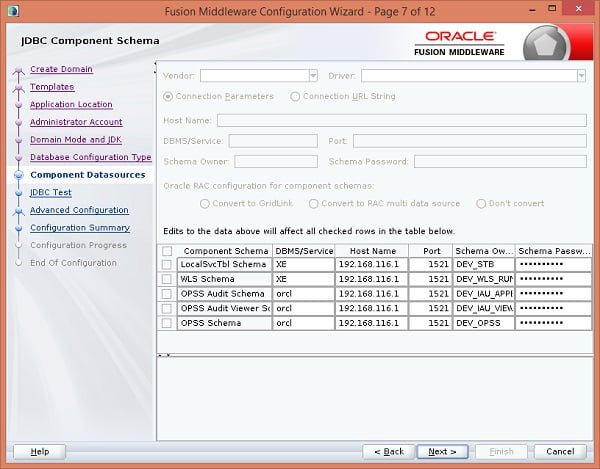
Edit database connection details for individual components. Click on Next.
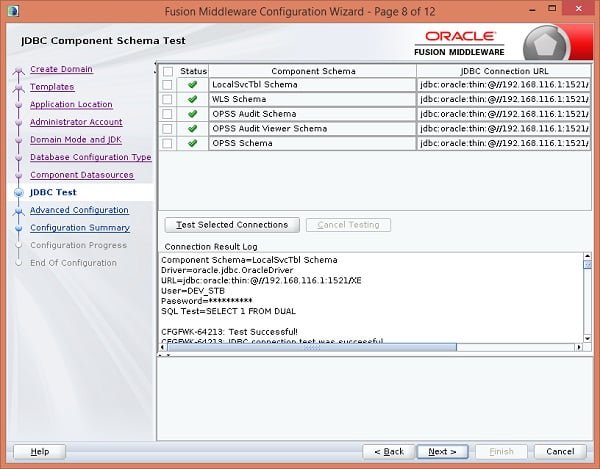
Check JDBC connectivity and Click on Next.
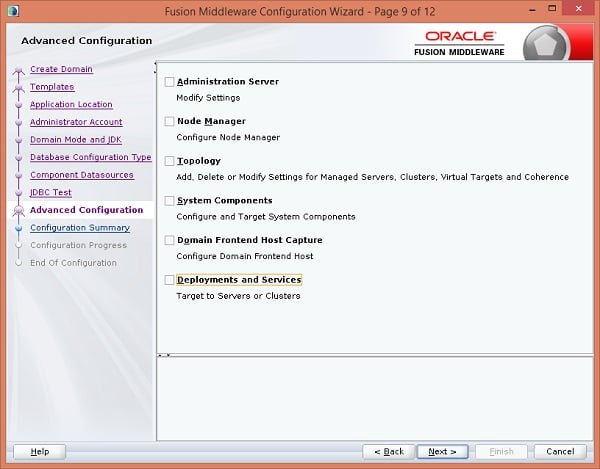
Select a component to performed Advance Configuration relevant to that component. Click on Next.
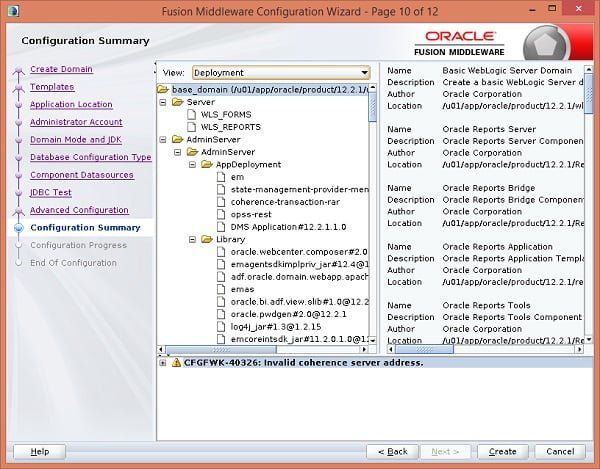
Review configuration summary and click on Create.


Configuration is in progress.
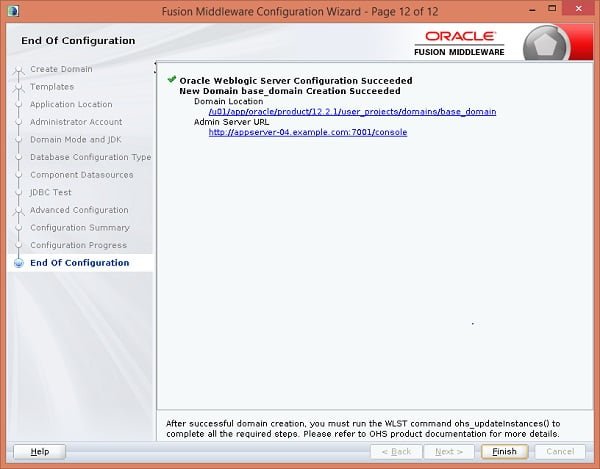
Oracle Forms and Reports 12c has been configured. Note down the URL to access the Admin console from browser.
Click on Finish to exit Configuration Manager.
Configure Linux Firewall
Connect as root user and allow Weblogic Server and Node Manager ports 7001/tcp and 5556/tcp respectively in Linux firewall.
# firewall-cmd --permanent --add-port=7001/tcp success # firewall-cmd --permanent --add-port=5556/tcp success # firewall-cmd --reload success
Configure Oracle Fusion Startup
Create boot.properties credential file for easier startup of weblogic server.
$ mkdir -p $DOMAIN_HOME/servers/AdminServer/security/ $ echo "username=weblogic" > $DOMAIN_HOME/servers/AdminServer/security/boot.properties $ echo "password=weblogic123" >> $DOMAIN_HOME/servers/AdminServer/security/boot.properties
Start Node Manager.
$ $DOMAIN_HOME/bin/startNodeManager.sh &
Start Weblogic Server.
$ $DOMAIN_HOME/bin/startWebLogic.sh &
Open URL http://appserver-04.example.com:7001/em in a browser.
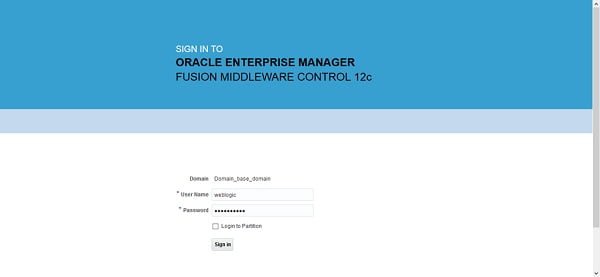
We have successfully created a Repository using RCU and configure Oracle Forms and Reports 12c using Configuration Wizard.
Final Thoughts
Configuring Oracle Forms and Reports 12c on CentOS 7 can be a complex task, but with the right guidance, it becomes manageable. If you need professional assistance or prefer to have an expert handle the setup for you, I offer specialized services on Fiverr. Check out my Fiverr profile to learn more about how I can help you efficiently configure Oracle Forms and Reports 12c on your CentOS 7 system. Let’s get your environment up and running smoothly!

excelente guia, muchísimas gracias por el esfuerzo.